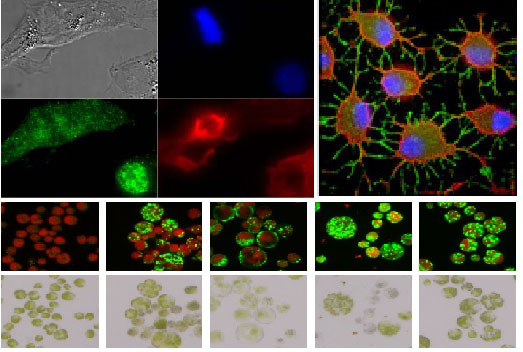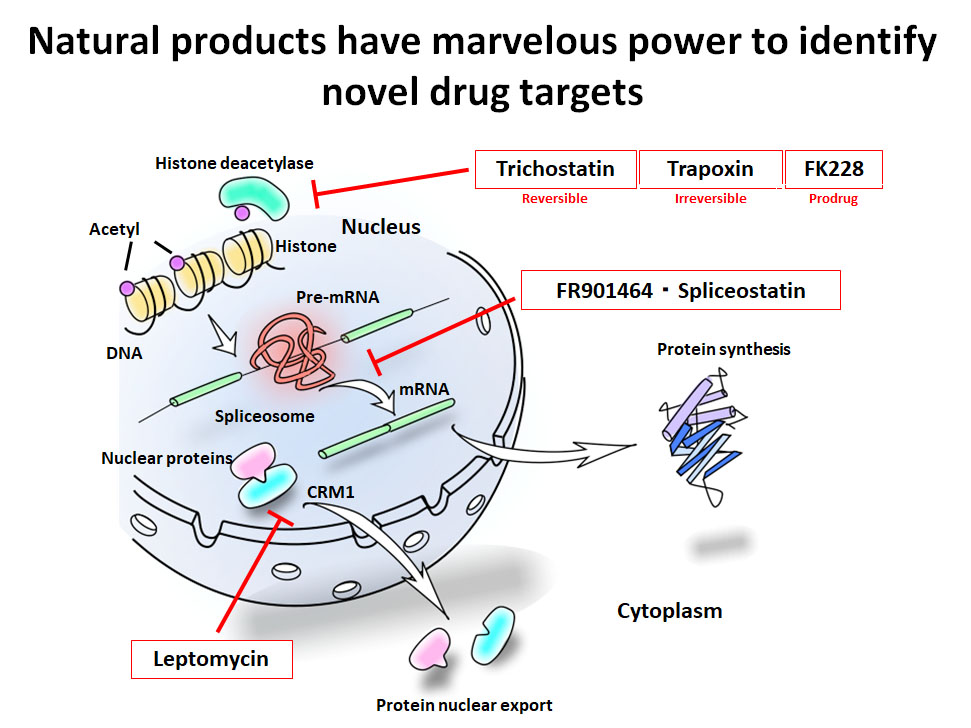
Since the discovery of antibiotics, dramatic changes in biological phenotypes brought about by bioactive natural products synthesized by a variety of microorganisms have not only greatly contributed to health of humankind but also tremendously captivated researchers in life sciences. Elucidation of the mechanism of action of bioactive compounds is a crucial research field that generates fundamental insights into life and novel therapeutic targets, in addition to the enormous impact on clinical drug development. The process of the mode of action study is highly similar to that of “Classical Genetics”, which determines the causative gene of a mutant causing specific phenotype. While classical genetics starts with a particular mutation of interest, the mode of action study of bioactive compounds is “Chemical Genetics”, which utilizes a chemical of interest, and identifies the target molecule that is responsible for a specific phenotype.
We have so far established experimental systems to identify drug target molecules logically and systematically by combining post-genomic tools and synthetic chemistry approaches based on cutting edge molecular genetics, leading to an innovative new field that we named “Chemical Genomics”. By developing and improving the methodologies, we successfully identified molecular targets for bioactive compounds whose mechanisms of action have not yet been clarified. Indeed, these target molecules include histone deacetylases (HDACs), a protein nuclear export factor (CRM1), and a splicing factor (SF3b), all of which are critical regulatory factors for eukaryotic gene expression and epigenetics, and regarded as important new targets for most advanced anticancer drug discovery. We will continue to conduct chemical genomics research by carrying out both screening for new compounds and the mode of action in parallel. We would like to enjoy mastering chemical genomics on bioactive compounds aimed at creating new concepts in life sciences.
 RIKEN Center for Sustainable Resource Science (CSRS) Chemical Genomics Research Group Japanese
RIKEN Center for Sustainable Resource Science (CSRS) Chemical Genomics Research Group Japanese

